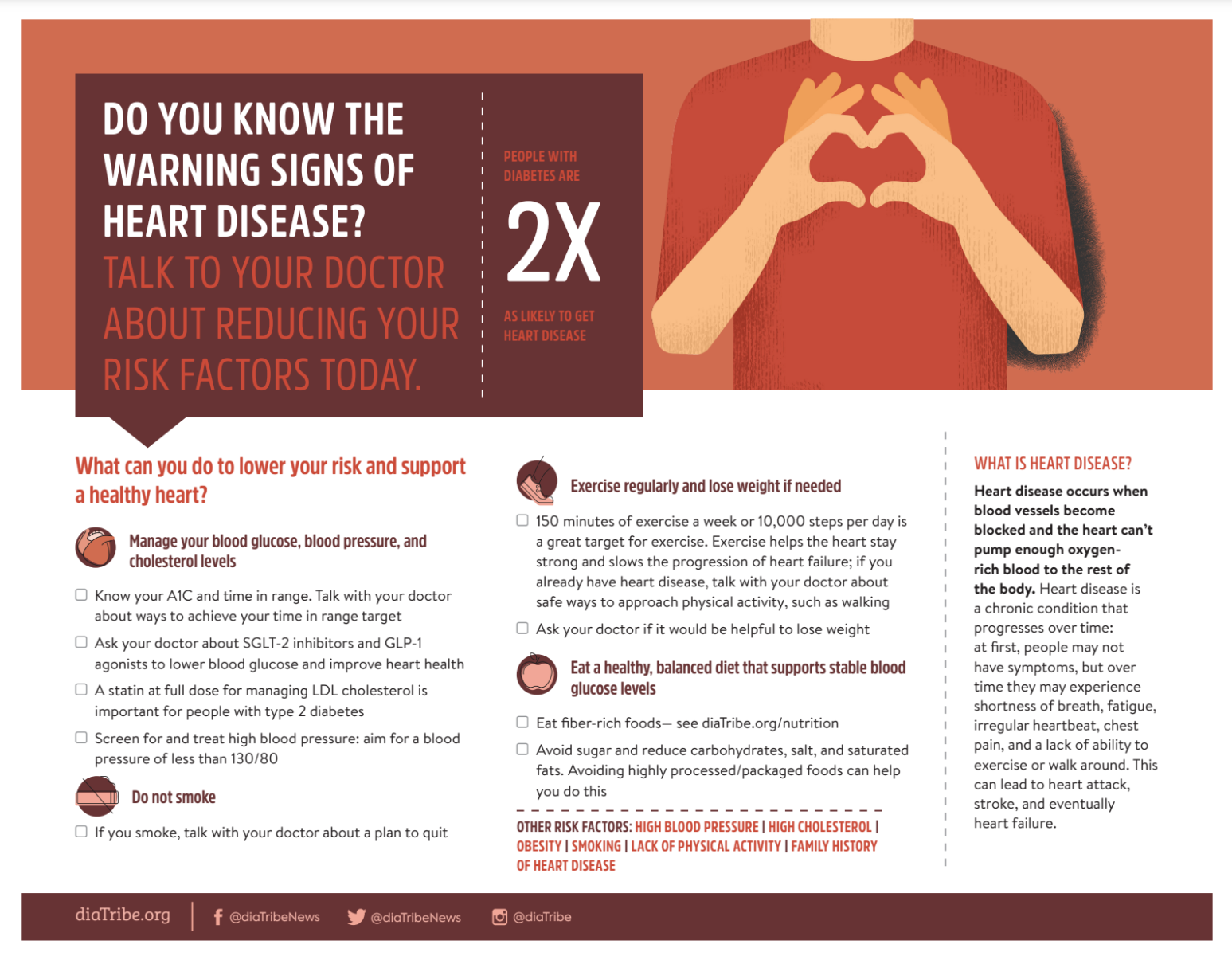Staying in Range to Keep Your Heart Healthy
By Frida Velcani
 Exciting new developments in diabetes research show that increasing your Time in Range can lower your risk of developing heart complications.
Exciting new developments in diabetes research show that increasing your Time in Range can lower your risk of developing heart complications.
Diabetes can increase the risk for heart-related complications such as heart disease and stroke. Additionally, it has been shown that people with diabetes are two to four times more likely to develop heart failure than people without.
A growing area of research is looking to understand the link between Time in Range (TIR) and diabetes-related complications. According to recent findings, keeping your glucose levels within a target range can reduce the risk of heart complications including cardiovascular death, cardiovascular autonomic neuropathy, and plaque buildup in your arteries.
Cardiovascular death
The term “cardiovascular death” refers to a death that results from disorders involving the heart and blood vessels. Heart attacks and strokes are some of the most common causes of cardiovascular death and can result from a buildup of plaque in the inner walls of blood vessels (plaque is all the fatty substances, cholesterol, calcium, and other things that are deposited in your blood vessels, causing them to become thick and stiff).
A higher TIR can provide long-term advantages, including lowering a person with diabetes’ risk of death from all causes, especially cardiovascular death. In one study, researchers used three days of continuous glucose monitor (CGM) data from 6,225 people with type 2 diabetes. They found that a 10% reduction in TIR was associated with a 5% increase in cardiovascular death and an 8% increase in death from all causes.
In this study, people who had a TIR below 50% were about 80% more likely to experience cardiovascular death than people with a TIR greater than 85%. These results were true regardless of a person’s age, sex, smoking status, BMI, diabetes duration, or cancer status.
Cardiovascular autonomic neuropathy
Cardiovascular autonomic neuropathy (CAN) is a serious complication where diabetes causes damage to the nerves to your heart and blood vessels, which can result in an abnormal heart rate and blood pressure. Learn more by reading our article, “Hitting A Nerve: Introduction to Neuropathy.”
The first study to demonstrate the association between TIR and CAN was published in 2020. Using three days of CGM data from 349 people with type 2 diabetes, researchers found that an increase in a person’s TIR decreased the prevalence and severity of CAN. In this study, only 13% of people with a TIR above 83% were diagnosed with CAN, but that number more than tripled to 53% among people whose TIR was below 41%.
Carotid intima-media thickness
The Carotid intima-media thickness test (CIMT) is used to see how much the carotid artery walls have thickened (which is a precursor for plaque build up). Your arteries are the blood vessels that supply fresh blood with oxygen from the heart and lungs to the rest of the body and your carotid arteries are a specific group that supply blood and oxygen to your brain, neck, and face. When the walls thicken and plaque builds up inside these arteries, it can result in decreased blood and oxygen flow to your brain – putting you at risk for stroke.
A study of 2,215 people with type 2 diabetes found an association between increased TIR and the results on a person’s CIMT – participants with a normal CIMT had a significantly higher TIR than those with abnormal CIMT. Participants wore CGM for three days, and researchers found that each 10% increase in TIR was associated with a 6.4% lower risk of having an abnormal CIMT; though interestingly, this association was only seen in males.
In another study using three days of CGM data, researchers looked at this relationship in 2,893 people with type 2 diabetes and similarly found that a 10% decrease in TIR was associated with a 9.5% higher risk of developing abnormal CIMT.
Lower extremity arterial disease (LEAD)
You also have arteries that carry blood and oxygen to other parts of your body including your legs (or lower extremities). If plaque builds up in these lower extremity arteries, the poor blood flow can result in leg pain, open sores, or even amputation. Lower extremity arterial disease (LEAD), sometimes referred to as peripheral artery disease (PAD), can also cause an increased risk for heart attack, stroke, and death.
In a study that looked at three days of CGM, researchers found that LEAD and TIR were associated – people with LEAD had significantly lower TIR than those without LEAD (65% and 73% respectively). The severity of LEAD also decreased with increasing TIR.
Learn more about LEAD by reading this article from the Know Diabetes by Heart initiative on reducing your risk for LEAD.
How can you reduce your risk?
To maintain a healthy heart, talk to your healthcare team about your risk for CVD and know your numbers – your BMI, waist circumference, A1C, blood pressure, cholesterol, and kidney function tests (eGFR and UACR). Reducing your risk for heart disease starts with managing your diabetes; you can learn more by checking out this helpful resource on managing your diabetes from the Know Diabetes by Heart initiative.
You can also take steps to lower your risk including lowering your blood pressure and cholesterol, consuming less alcohol, avoiding or quitting smoking, incorporating nutritious foods in your diet, and engaging in regular exercise.
If you are at risk for heart disease, you may also want to discuss treatment options with your healthcare professional –SGLT-2 inhibitors and GLP-1 receptor agonists have been shown to help prevent and treat heart disease in people with diabetes. These medicines can help people with diabetes both increase their TIR and improve their heart health.
Learn more about heart disease by downloading our helpful infographic here and reading our article, “Diabetes and Heart Disease – Keep Your Heart in the Right Place.”
This article is part of a series on Time in Range.
The diaTribe Foundation, in concert with the Time in Range Coalition, is committed to helping people with diabetes and their caregivers understand time in range to maximize patient’s health. Learn more about the Time in Range Coalition here.
This article is part of a series to help people with diabetes learn how to support heart health, made possible in part by the American Heart Association and American Diabetes Association’s Know Diabetes by Heart initiative.








